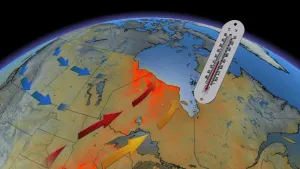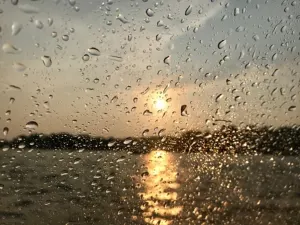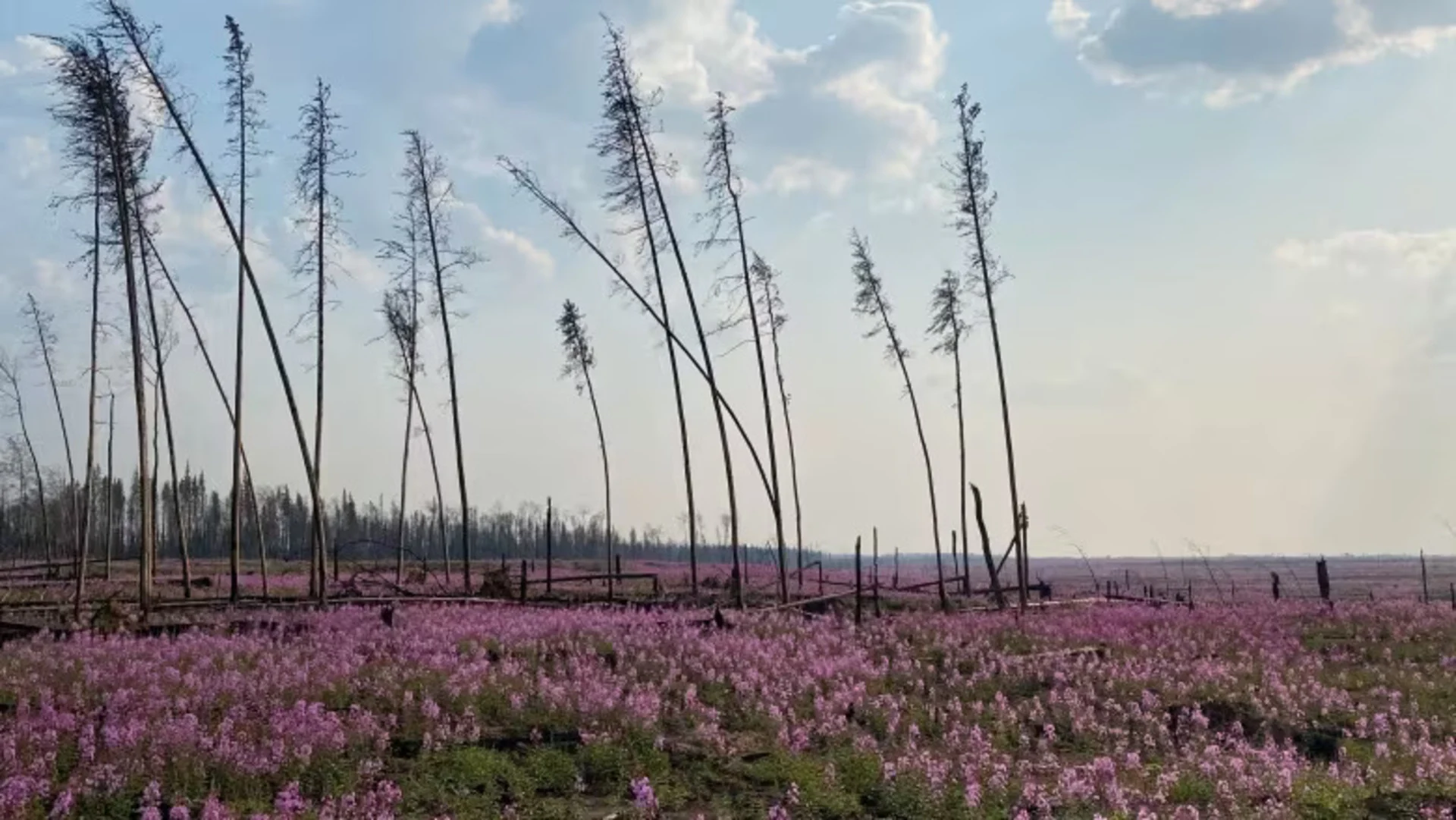
Meet the purple flower that thrives after wildfire — fireweed
Visit The Weather Network's wildfire hub to keep up with the latest on the active wildfire season across Canada.
In areas that faced wildfire this spring, fields of purple flowers bloomed amidst the scorched trees.
As the name suggests, fireweed is one of the first species to show itself following a wildfire. It plays an important role in the forest reclamation cycle, and is a plant with many uses.
Simon Landhäusser is a professor in the department of renewable resources at the University of Alberta who researches forest land reclamation. He said that the plant may be considered a weed in other places, and has been an issue in British Columbia — where it is also in bloom right now. However, it is native to Alberta and is not overly competitive with other species.
Landhäusser said the fields of fireweed that we are seeing bloom after wildfire, were likely already there, only the plant could not bloom under the shade of the tree canopy.
"It is a species that needs light and lots of nutrients in order to thrive and therefore it really takes off after disturbances."
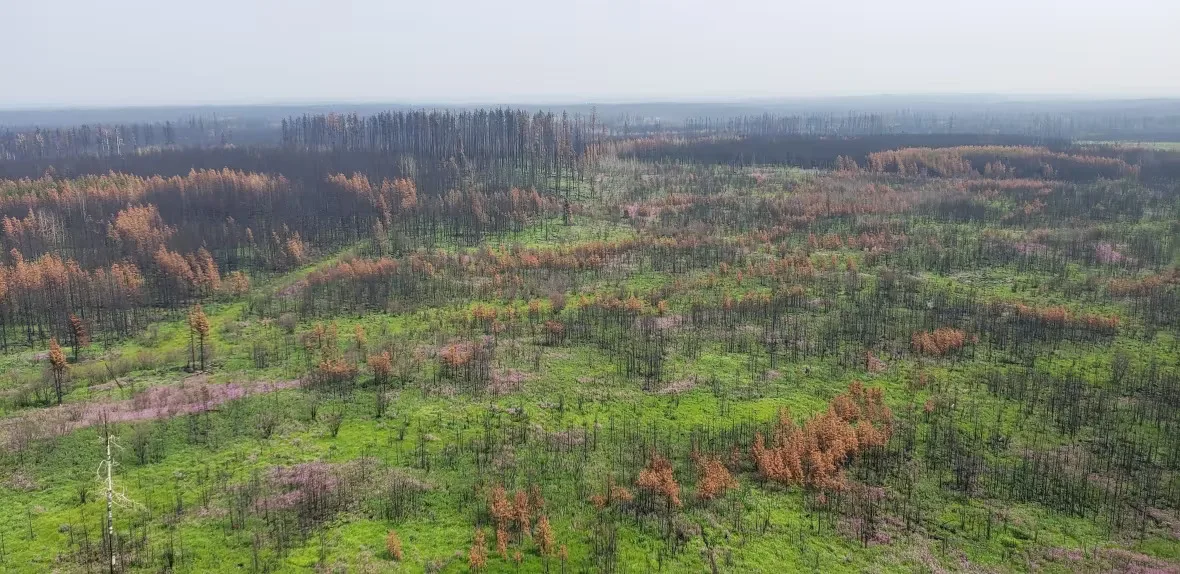
Purple patches of fireweed could be seen in Edson, Alta., on July 20, 2023. (Submitted by Alberta Wildfire)
SEE ALSO: How to grow your own eco-friendly rose garden
It is able to bloom and thrive after wildfire because of the sudden influx in light and soil nutrients caused by burning, such as nitrogen.
Fireweed can serve as a high-quality food source for many animals including pollinators, deer and rabbits, Landhäusser said.
"They're probably nice and nutritious because if they like a lot of nitrogen then they also contain a lot of nitrogen."
This is especially important after wildfire when many other food sources have burned up in an area.
The plant also fully dies back in the winter and decomposes quickly, Landhäusser explained. This means fireweed is not contributing to a build up of a dry thatch layer — unlike many grasses — which serves as fuel for the next wildfire.
"Fireweed in my eyes, is a much less flammable option of forest recovery than if you have grasses coming back."
Uses range from medicine, to jelly
The plant is also important for traditional knowledge keepers, like Brenda Holder.
Holder runs Mahikan Trails, an Indigenous tour company that offers medicine walks in Banff and Sundre, Alta.. She said many of the Albertans who go on her tours have seen these plants before, but just didn't give them much thought.
"When they hear some of the medicinal uses, and food uses, and some of the stories around them, they're pretty fascinated and usually they go away wanting to seek more information on it."

Brenda Holder offers medicine walks through her company Mahikan Trails in Banff and Sundre. (Submitted by Travel Alberta)
RELATED: Photos: 5 plants that are happy when it rains
Holder said that fireweed not only replenishes the land after it burns, but it can also be used for burns on human skin.
"Fireweed really is what we consider the great healer of all burns."
Holder learned about fireweed and its uses from her grandmother. She said that in addition to its practical uses, she loves the plant for its beauty.
"Fireweed just seems to pop out in your face and it brings this ray of warmth when the landscape is grey with rain."
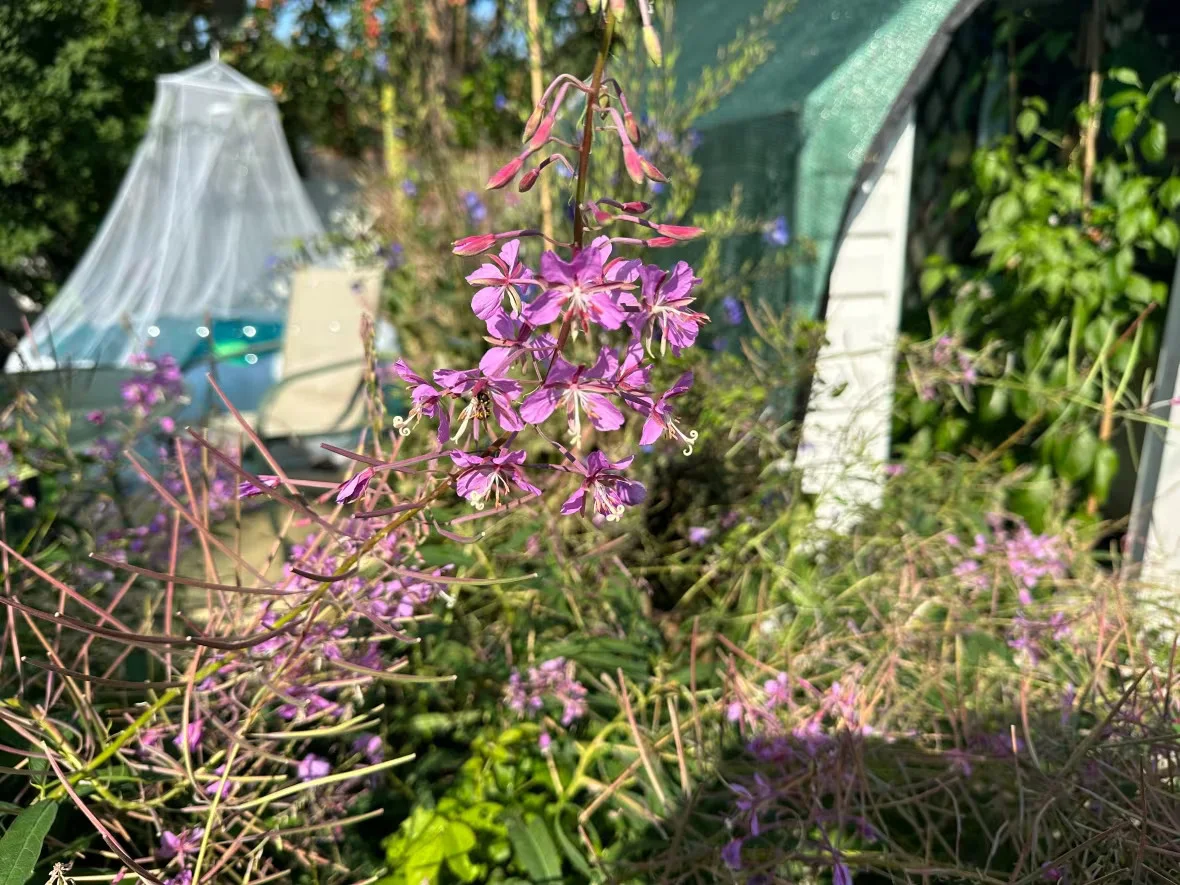
Chris Wywal sowed seeds to grow fireweed in his backyard. He uses the flower for tea, jelly, and salve. (Emily Williams/CBC)
READ MORE: 'Zombie fires' are occurring more frequently in boreal forests
Chris Wywal is an Edmonton gardener who grows fireweed in his yard. He discovered it growing at his mom's house and got some seeds from her.
"One plant will produce 80,000 seeds, so I thought one pod would be just enough," he said. "It just spreads like wildfire."
"You drive out into the country and there it's everywhere. So I'm glad it's around because the bees love it and it has so many uses."
Wywal uses his fireweed for tea and jelly, and this year is experimenting making a salve to be used for inflammation.
Wywal's fireweed jelly took home a first place prize in the jelly category at the K-Days preserves competition.
"To me it's a little bit floral with maybe a raspberry or blackberry— some people say it's grape. It's more fruity than you would ever imagine a floral would be."
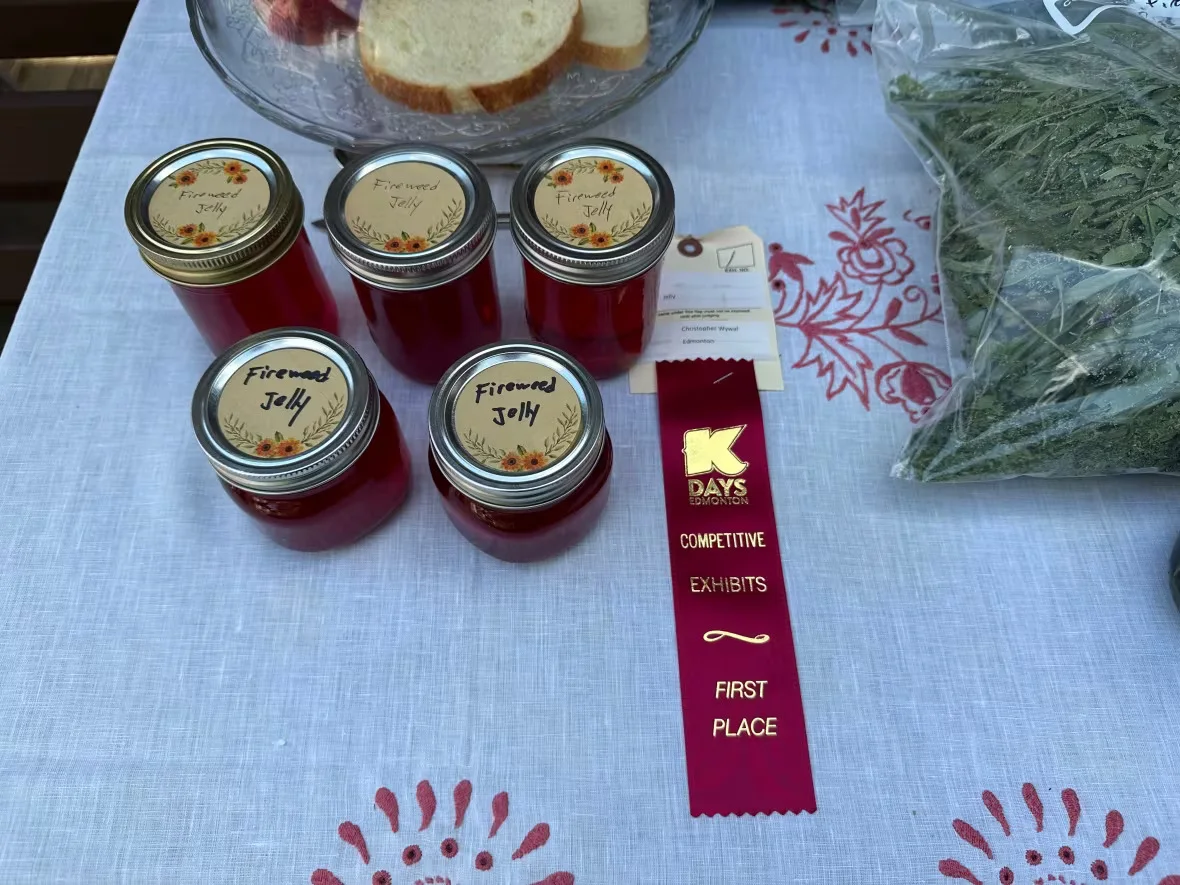
Chris Wywal won first place in the jelly category at the K-Days preserves competition for his fireweed jelly. (Emily Williams/CBC)
Thumbnail courtesy of Nina Veselka.
This article was originally written by Emily Williams for CBC News.






